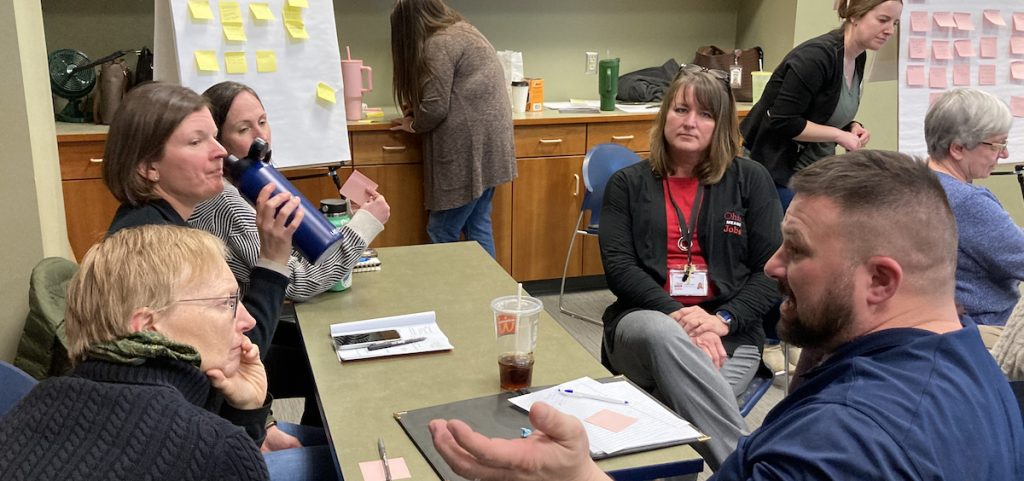Buckeye Hills Regional Council is asking residents to help shape southeast Ohio’s future economic development
By: Gabriel Scotto
Posted on:
ATHENS, Ohio (WOUB) – Economic development experts in southeastern Ohio are looking at the region’s future through a fresh set of eyes – those of the people who live and work here.
Every five years, Buckeye Hills Regional Council creates a Comprehensive Economic Development Strategy (CEDS) for the eight counties it represents.
“When we wrote this document (in previous years) we’ve really relied on a small group of stakeholders to help us inform the document,” said Samantha Miller, development director for Buckeye Hills.
These people tended to see economic development through a certain lens, and as a result, Miller said earlier iterations of CEDS were focused around attracting manufacturers, business retention and expansion, but ignored the arts or outdoor recreation as potential avenues for economic growth.
This time, Buckeye Hills is taking a new, community-based approach.

“I think being a part of a community is a major factor for us choosing to live and work in southeastern Ohio, and it was so clear to us that community was not at the basis of previous documents,” Miller explained. “So, we knew that we needed just to completely start from scratch.”
Between February 13 and March 7, Buckeye Hills held a series of workshops in each of the eight counties to gather input. It will also visit with civic groups such as the Kiwanis and Rotary clubs, along with local chambers of commerce. There’s also an online survey for people who were unable to attend the workshops.
According to those who attended the workshops, two of the region’s greatest strengths are its natural beauty and sense of community.
“The outdoor recreation sector has really blossomed since the pandemic. People just like to get out. They like to see the beauty of nature and be part of it and that’s a great opportunity for our region,” said Gwynn Stewart, assistant professor of community development at Ohio State University’s Noble County Extension.
Miller agreed the region should play to its strengths rather than just try to become a manufacturing hub.
“We do have a growing tourism economy and a growing arts economy, so you might as well put those to use,” she said.
However, those present at the workshops also said the outdoor economy and outdoor recreation pose a potential threat if not developed in a sustainable manner. In Hocking County, for example, attendees said their community was not prepared for the surge of visitors that came to the Hocking Hills in recent years.
Other challenges include a lack of affordable housing, lack of access to clean drinking water and broadband access.
Buckeye Hills reached out to sister organizations throughout Ohio, and in North Carolina and Tennessee, to see how they incorporated public participation into their development strategies. Buckeye Hills then worked to downscale some of the initiatives to fit the size of the communities it serves.
“What works in metropolitan Knoxville, Tennessee, is not going to work for us in rural southeastern Ohio,” Miller said. “You know, it’s not possible that we’re going to get over 1,000 responses to a survey, but we could probably get 200 responses to a survey.”
Another goal Buckeye Hills hopes to achieve is to challenge the public’s preconceptions of what economic development means. Miller said many people conflate economic development with large corporations setting up shop and ignoring the role of small businesses and entrepreneurship in growing local employment.
“I think that folks that often don’t feel like the needle is being moved on economic development are looking at it through a very traditional lens,” Miller explained. “I always implore folks to celebrate the small businesses that are opening in your downtown because that’s economic development.”
One statistic Miller enjoyed highlighting at workshops was that 99% of all small businesses in the region have fewer than 100 employees.
“I always pull out that statistic because I think it’s really fascinating, especially when folks are waiting for these major employers to come in and save us, but we can save ourselves,” Miller said. “We have the businesses in our backyard that just need a little bit more support to grow and we could easily make that happen.”
Tasha Werry, executive director of the Marietta-based nonprofit Building Bridges to Careers, agreed, saying there is no “silver bullet” to economic development and that investing in small local businesses will provide more sustainable economic growth and lasting development than a plan focused solely on attracting large employers.
“We can’t simply rely on that. We have to put our resources in other areas, too,” Werry said. “I see small businesses that are adding five and 10 jobs, and when you add those up, it equates to the number of positions that one larger company that comes in might do.”

